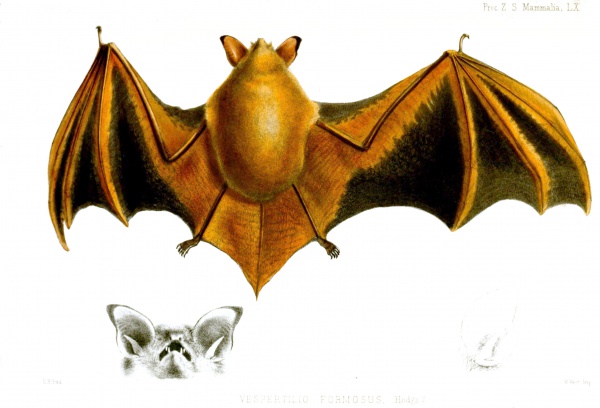Facts About Hodgson's bat
Hodgson's bat, also known as the copper-winged bat, is a fascinating species of vesper bat that belongs to the genus Myotis. These distinctive bats inhabit the mountain forests of Central, Southeast, and East Asia, with a range extending from Afghanistan to Japan's Tsushima Island. Hodgson's bats are relatively small, measuring approximately 5 centimeters in body length, and are easily recognized by their striking yellowish fur, which distinguishes them from other local bat species.
Adult Hodgson's bats typically have head and body lengths ranging from 4.3 to 5.7 centimeters, with tails between 3.6 and 5.6 centimeters. Their forearms measure about 4.3 to 5.2 centimeters, and they weigh roughly 15 grams. The yellow tint of their fur is a prominent feature that sets them apart.
These bats have an extensive geographic distribution and are native to regions such as Afghanistan, Bangladesh, India, Nepal, China, Taiwan, Korea, Indonesia, and the Philippines. They primarily inhabit upland and lowland forests, and are known to roost in diverse locations including caves, trees, and even buildings.
As insectivores, Hodgson's bats rely on echolocation to hunt and capture insects during flight. Their breeding season typically spans from March to May. During this period, females form maternity colonies in underground locations and give birth in May and June. The young bats remain in the roost initially, progressively learning to fly as they mature. These bats enter hibernation in caves from mid-August to early October.
Despite their extensive range, Hodgson's bats are not particularly common. While the trend in their population is somewhat uncertain, their adaptability and the lack of significant threats have resulted in their current classification as near-threatened by the IUCN Red List of Threatened Species.

 North Korea
North Korea